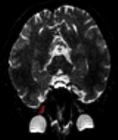Table of Contents
Non-surgical Techniques for Combined Rheumatic Severe Aortic and Mitral Stenosis – Case Series and Brief Review of Literature
Published on: 13th May, 2024
Rheumatic heart disease persists as a significant concern in developing regions, often resulting in multivalvular heart conditions. Treatment options are limited, though percutaneous transvenous mitral commissurotomy effectively addresses rheumatic mitral stenosis. Non-surgical interventions for aortic stenosis include balloon aortic valvotomy and Transcatheter aortic valve replacement (TAVR), tailored to patient factors like age and comorbidities.We describe two cases of Rheumatic multivalvular disease which were managed non-surgical. The first case is a pioneering procedure performed on a young patient combined percutaneous transvenous mitral commissurotomy with balloon aortic valvotomy, guided by 4-dimensional transoesophageal echocardiography (4D TEE). This represents the first documented instance in medical literature, showcasing the potential of integrated interventions and advanced imaging techniques. In the second challenging case involving a heavily calcified, retrovirus, and Hepatitis B positive 55-year-old, a staged approach was adopted, involving percutaneous transvenous mitral commissurotomy followed by Transcatheter aortic valve replacement (TAVR). Despite complexities, this sequential strategy demonstrates the adaptability of transcatheter techniques in managing complex valvular pathologies. These cases highlight the evolving landscape of interventional cardiology and underscore the importance of tailored, multidisciplinary approaches in optimizing outcomes for patients with rheumatic heart disease and multivalvular involvement, especially in resource-limited settings. Further exploration and dissemination of such innovative strategies hold promise for enhancing cardiac care quality and expanding treatment options globally.
Outcome of Patients Presenting with Peripartum Cardiomyopathy in a Tertiary Care Center of Nepal
Published on: 29th May, 2024
Purpose: Peripartum cardiomyopathy is a rare life-threatening cardiomyopathy of unknown etiology with significant maternal morbidity and mortality. It causes heart failure due to left ventricular systolic dysfunction with or without left ventricular dilatation in the last month of pregnancy up to 5 months postpartum in previously healthy women. We aimed to determine short-term outcomes of peripartum cardiomyopathy clinically as well as in terms of left ventricular systolic function and to study the clinical profile and associated risk factors.Patients and methods: A prospective observational study was carried out in the Department of Cardiology of Manmohan Cardiothoracic Vascular and Transplant Center, Institute of Medicine, Kathmandu, Nepal, from July 2018 to January 2022. All the patients with peripartum cardiomyopathy who presented to the department of cardiology were enrolled in the study and re-evaluated with echocardiography at 6 months.Results: A total of 68 women met the inclusion criteria. The mean age was 28.38 ± 5.5 years (range 19 to 44 years). The most common clinical presentation was dyspnea followed by lower limb edema. Six (8.8%) patients presented during the last month of pregnancy whereas 62 (91.2%) patients presented in the postpartum period. The mean left ventricular ejection fraction on presentation was 30.01 ± 8.54. A full recovery was observed among 60.29% at 6 months. The mortality rate was 4.41%.Conclusion: Timely diagnosis and management of peripartum cardiomyopathy with standard therapy for heart failure leads to better recovery of left ventricular systolic function.
Percutaneous Closure of Post-myocardial Infarction Ventricular Septal Rupture-experience From a Resource-limited Setup From Eastern Part of India
Published on: 20th June, 2024
Background: Post-infarction ventricular septal rupture (VSR) is a rare but lethal mechanical complication of an acute myocardial infarction (AMI). It results in 90% - 95% mortality within two months of diagnosis without any kind of intervention. Given high surgical mortality, transcatheter closure has emerged as a potential strategy as an alternative to high-risk surgical closure. Indian data on percutaneous device closure of post-AMI-VSR is limited hence we report our resource-limited single-centre experience with different kinds of occluder devices for closure of post-AMI VSR.Methods and results: In this single-centre, retrospective, cohort study, patients who underwent transcatheter closure of post-MI VSR between 2018 and 2024 at Health World hospitals, in Durgapur, West Bengal, were included. The primary outcome was a mortality rate of 30 days. The study population was eleven primary cases of post-MI VSR. The mean age of the population was 61 years. The majority of the patients had anterior wall MI (54.5%) and the remaining had inferior wall MI. Different kinds of devices (ASO, PostMI VSD device, Konar MFO) were used to close VSR. Successful closure was performed in 9 patients (81%) with minimal residual shunt in 2 patients. Out of 9 cases 3 patients expired, one was lost to follow up and the rest are doing well at 30 days follow-up. Conclusion: Transcatheter closure of PMIVSRs can be performed with different kinds of devices with high technical success, relatively low procedural complication rates, and 30 days survival even in a resource-limited setup as an alternative to high-risk surgical closure.
Utilizing Smartphone ECG for Early Detection and Management of Ischemic Heart Disease: A Case Report
Published on: 24th June, 2024
Ischemic Heart Disease (IHD) remains a significant cause of morbidity and mortality worldwide. We present a case report of a 54-year-old individual presenting with symptoms suggestive of IHD, including palpitations and chest heaviness. Utilizing a Spandan device at home, the patient detected anteroseptal and lateral wall ischemia, prompting consultation with a cardiologist. Subsequent diagnostic evaluations revealed Left Ventricular Hypertrophy (LVH), concentric LVH, regional wall motion abnormality, and Grade I diastolic dysfunction. Hypertension and dyslipidemia were identified as prominent risk factors, with additional findings of carotid artery disease. Management strategies included antihypertensive medications, lipid-lowering therapy, and lifestyle modifications. This case underscores the complexity of diagnosing and managing IHD, highlighting the importance of comprehensive assessment and multidisciplinary care in optimizing patient outcomes.
Descriptive Study of the Urinary Tract Infections in Patients Admitted in the Cardiology Ward of Afghan Momand Medical Complex
Published on: 28th June, 2024
Urinary Tract Infection (UTI) is very common in our community most specifically in married females with numerous antecedent risk factors. The aim of the study was to find out about the current risk factors and clinical profile of urinary tract infections in patients admitted to the cardiology ward of Afghan Momand Medical Complex for various purposes.It was a cross-sectional descriptive hospital-based study including both male and female patients visiting the Afghan Momand Medical Complex from January 2022 to June 2022. Of all 960 patients, 202 (21%) patients had urinary tract infections with gender distribution as 69 (34.2%) males and 133 (65.8%) females. In fact, 33 (16.3%) patients with urinary tract infections were single while the rest 169 (83.7%) patients were married. In addition, regarding clinical profile, the following clinic was respectively more prevalent: Dysuria in 120 (59.4%) patients, flank pain in 73 (36.1%) patients, urine frequency in 67 (33.1%) patients, urgency in 36 (17.8%) patients, fever in 24 (11.8%) patients, and nausea and vomiting in 19 (9.4%) patients. Moreover, the following risk factors were respectively the most common ones: Diabetes mellitus 86 (42.5%), pregnancy 30 (14.9%), stones 15 (7.4%), 10 (4.9%) devices, 10 (4.9%) prostatic hyperplasia, and 4 (2%) anatomical anomalies.Urinary tract infection is a common disease in the admitted patients in Afghan Momand Medical Complex specifically being more common in females and early 20s of the age. In fact, diabetes, pregnancy, and kidney stones were the leading associated factors with UTI. Moreover, dysuria, bladder emptying irritative symptoms, and abdominal pain were the most prevalent clinical profile of the patients. Special attention should be paid to infectious diseases in cardiac patients since infection itself is a stress and a threat to such patients and authorities should design special measures to prevent UTI in the general population to avoid a sum of burden on the health system.
Improving Cardiac Rehabilitation Referral Rates in Patients with Coronary Heart Disease from Diverse Communities Using an Electronic Order System
Published on: 29th June, 2024
Introduction: Despite the benefits of Cardiac Rehabilitation (CR), local and national CR referral and participation rates remain low when compared to established cardiovascular therapies, especially amongst racial/ethnic groups. Objectives: This study investigated the effects of the implementation of a CR program and electronic order set (EOS) in a large health system on CR referral and participation rates among a diverse group of patients with Coronary Heart Disease (CHD). Methods: A total of 360 patients from UCSD Health who presented with ACS were prospectively evaluated during initial hospitalization and 6- and 12-weeks post-discharge. The multivariable logistic regression model assessed referral and participation rates by week 1 and -12 post-discharge, adjusting for gender, age, race, ethnicity, geography, and referring physician subspecialty. Results: UCSD CR program implementation led referral rates to increase at week 1 (Pre- 38.6% and Post-54.9%, p = 0.003) and week-12 (Pre- 54.1% and Post- 59.8%, p = 0.386). Post-CR referrals were more likely at week-1 (OR: 1.93, 95% CI 1.27-2.95) and week-12 (OR: 1.26, 95% CI 0.79-2.00). EOS implementation increased referral rates at week-1 (Pre- 40.3% and Post- 58.7%, p < 0.001) and week-12 (Pre- 54.9% and Post- 60.4%, p = 0.394) with referrals more likely at week-1 (OR: 2.1, 95% CI 1.35-3.29) and week-12 (OR: 1.25, 95% CI 0.795-1.98). Participation in CR following EOS was more likely at both week-1 and week-12. Multivariable analysis revealed disparities in referral based on race, geographic location, and referring physician subspecialty. Conclusion: A CR program and EOS implementation were shown to increase referral rates with long-term potential for increasing referral and participation rates. Condensed abstract: This prospective study investigated the implementation of a Cardiac Rehabilitation (CR) program and Electronic Order Set (EOS) within the same health system on CR referral and participation rates. 360 patients with ACS were evaluated over 12 weeks. UCSD CR program and EOS implementation led referral rates to increase at week-1 and -12. CR participation was more likely to increase at week-1 and -12 following EOS. Multivariable analysis revealed disparities in referrals disproportionally affecting racial and ethnic minority groups and rural communities. CR and EOS implementation may increase CR referral rates for diverse patients with CHD.

HSPI: We're glad you're here. Please click "create a new Query" if you are a new visitor to our website and need further information from us.
If you are already a member of our network and need to keep track of any developments regarding a question you have already submitted, click "take me to my Query."






















































































































































